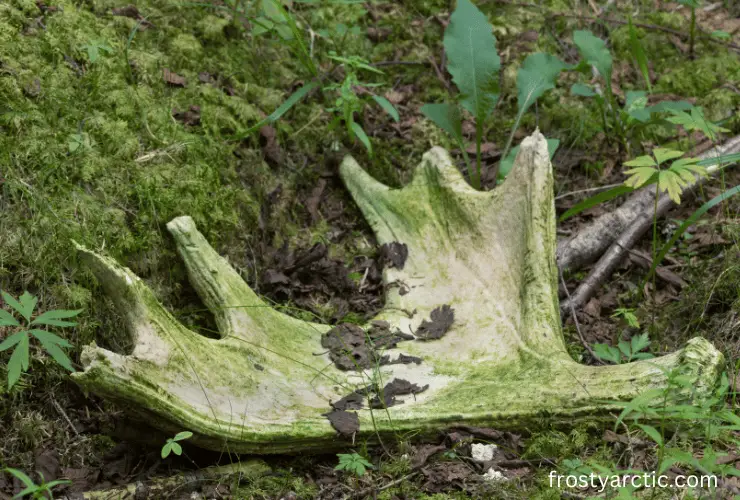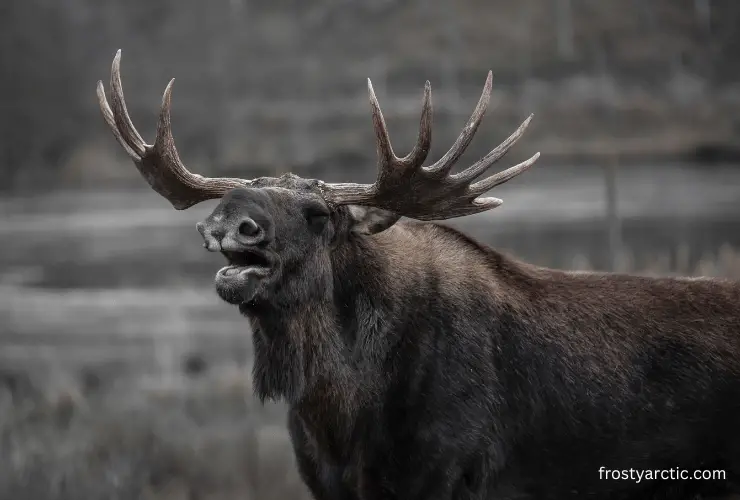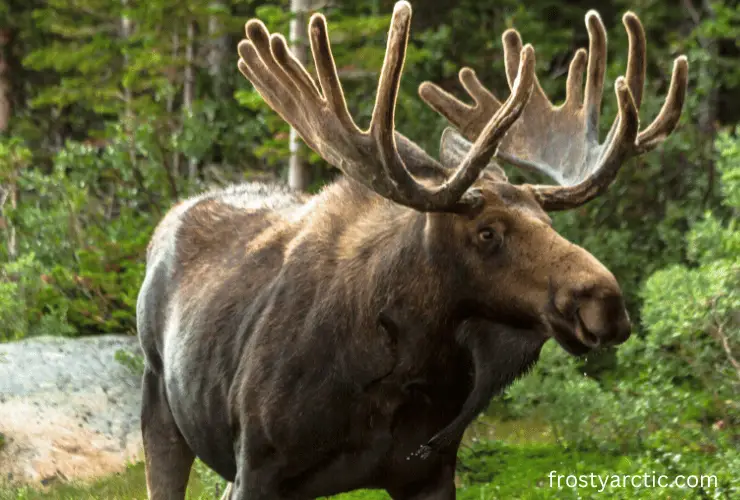All male animals in the deer family shed their antlers. Moose is no exception. Male moose lose their antlers in Winter while their growth is controlled by testosterone. These creatures lose their antlers every year after the breeding season ends so they can eat adequately to survive the cold.
Did you know that antlers can grow up to 6 feet wide? Fascinating right? This article sheds light on moose antlers, their antler-shedding behavior, and how much they weigh.
Why Do Moose Have Antlers?
Antlers play a key role in several aspects of a moose’s life, for instance:
Mating
During the breeding season, male moose use their antlers as a showpiece to attract females.
They rub their antlers on trees to spread their scent to capture the attention of a female for breeding.
Fighting off rivals
Moose use mating displays to show off their strength to females. They use them as weapons to fight off other males and establish their dominance.
Older moose use their antlers to scare off younger males and win over female moose for mating. ~ Lawrence Bay
Protection against Predators
Antlers are mostly bone material and serve as a great tool to ward off predators and fight against violent animals that prey on moose.
During mating season, the noises moose make attract predators. So, they can use their antlers to defend themselves.
Do Female Moose Lose Their Antlers?
In the deer family, female animals do not grow antlers. Caribou (also known as reindeer) are the only animals in the deer family where both males and females have antlers.
In other words, female moose do not have antlers; thus, they cannot shed their antlers.
How Much Do Moose Antlers Weigh?
Antlers of a fully grown bull moose can weigh up to 25 to 30 lbs. In Alaska, antler mass ranges from 45 to 50 pounds.

Fun Fact: The greatest recorded weight of moose antlers is about 75 pounds in interior Alaska. ~ NPS.gov
Antler size does not necessarily represent the age of antlers. However, research suggests that antler growth is about an inch per day. In other words, antler weight increases by one pound per day.
Why Do Moose Lose Their Antlers?
Now that we know the purpose of antlers. Let’s discover why moose lose their antlers. Moose shed their antlers naturally just like elk and deer once they reach maturity.
During the breeding season, male moose experience a change in testosterone levels. As a result, antler growth slackens.
Plus, antlers are not ideal for energy conservation during the harsh winter season.
Moose reabsorb calcium from their antlers to maintain an adequate level of testosterone. Consequently, the skull and antler joint weakens and the antler falls off. ~ North American Nature
Osteoclasts break down the bone cells which connect antlers to a moose’s skull. In spring, the same cells help rebuild moose antlers. ~ National Geographic
When mating with a female moose, the male animal requires a high level of testosterone, a hormone responsible for improving the reproductive system of a moose.
To achieve this high level, male moose require sufficient calcium. So, the animals lose their antlers to reabsorb calcium and maintain an optimum testosterone level.
How Often Do Moose Lose Their Antlers?
Moose lose their antlers every year after the breeding season ends, in the Winter. It helps them conserve enough energy to last through the cold winter season.
Their antlers are one of the fastest-growing tissues. The highest recorded growth rate is about 20 centimeters in just 9 days. ~ Source
Do Moose Antlers Grow Back Bigger?
Antler growth increases with age, but only till the age of five. When moose reach the age of five, antler growth is maximum, after which it starts to decline.
When a moose is about a year old, its antlers are composed of just two or three points with very tiny palms.

The antlers reach their maximum size at the age of five, after which antler growth slows down.
As a bull moose ages, antler growth starts to decrease. Awkwardly-shaped antlers are more common among older moose. It indicates their low reproductive status and old age compared to potential female mates. ~ Lawrence Bay
Do Antlers Grow Back If Broken?
If damaged or broken, moose antlers will not grow back until the shedding season begins and the animal loses its antlers.
So, moose are stuck with the broken pair of antlers and have to wait for the shedding season. After this period, their antlers will grow back in spring the following year. ~ Yukon Wildlife Preserve
When Do Moose Antlers Grow Back? How Do Moose Antlers Grow?
As the season changes from winter to spring, the amount of sunlight gradually starts to increase.
This is when moose antlers start to grow because the testosterone levels change as the season shifts. As days start to become longer, antler growth is stimulated.
As antlers grow, they are covered in velvety fur, which supplies them with nutrients via veins, helping the antlers get bigger.
What Happens to the Shed Antlers?
As discussed earlier, moose antlers are a rich source of calcium. But what happens to the antlers once a moose has shed them?
Other smaller animals like mice, porcupines, and squirrels use antlers as a rich source of calcium. ~ Source
These animals depend on them for various nutrients, such as phosphorus and mineral salts.
FAQs
What animal does not lose its antlers?
North American animals with horns do not lose their antlers and carry them all year round, for example, antelope, bison, mountain goat, and wild sheep.
Does shedding antlers hurt?
Shedding antlers is a natural process and does not hurt moose.
Are moose antlers worth any money?
Yes, moose antler prices depend on their size. For instance, a 350-inch pair costs about $400. Every 10 inches (exceeding this standard size) costs an additional $50.
Conclusion
Moose antlers are an attention-grabbing part of these animals in addition to their massive size. I hope this article explained their purpose and the antler-shedding process adequately. This is all for now!


